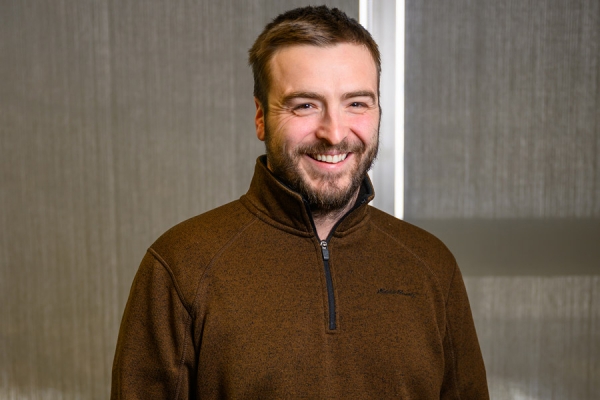 Drew Marquardt took another step toward bringing neutron scattering to material research and cancer treatment in Windsor.
Drew Marquardt took another step toward bringing neutron scattering to material research and cancer treatment in Windsor.
Drew Marquardt took another step forward in his quest to bring neutron scattering to the forefront of material research and cancer treatment in Windsor when he received the Early Researcher Awards (ERA) program from the Ministry of Colleges and Universities.
The five-year award comes with $140,000 along with an additional $50,000 funded from the UWindsor Office of the Vice-President, Research and Innovation.
“Since Canada’s major neutron beam source facility closed down in Chalk River in 2018, researchers have had to travel to international facilities to conduct imperative research,” says Dr. Marquardt, acting head of the Department of Chemistry and Biochemistry.
“My lab is building a research program that will hopefully result in bringing a compact accelerator-driven neutron source, or CANS, infrastructure to Windsor. This funding shows that the broader community sees the value.”
Neutron beams help analyze materials on the smallest scales to provide information that would be impossible to find out any other way. For now, his research team must travel to international facilities for their projects. Marquardt says bringing a neutron source back to Canada is crucial for development of research talent.
“We are training the next generation of neutron scatterers, well-rounded scientists who can co-ordinate with scientific and technical staff alike.”
Marquardt says his lab currently creates opportunities for undergraduate and graduate students as well as post-doctoral candidates to remain highly trained by providing the following:
- opportunities to work alongside professionals in the design of neutron scattering instruments and techniques,
- hands-on neutron experience at world-renowned facilities, and
- focused training curriculum to prepare them for careers in receptor industries and government laboratories.
Marquardt’s ERA project will also include laying the groundwork for exploring Boron Neutron Capture Therapy for clinical treatment of cancer, potentially saving thousands of lives each year.
“Boron Neutron Capture Therapy is a cancer treatment that uses neutron capture within the patient to kill the cancer cells and effectively destroy the tumour, and this is an opportunity for Ontario to be a North American leader,” says Marquardt.
Shanthi Johnson, vice-president, research and innovation, says Marquardt’s research not only advances material science and cancer treatment, but supports the next generation of scientific leaders.
“Drew Marquardt's visionary project embodies the spirit of discovery, innovation and progress, pushing boundaries and creating pathways for a future defined by scientific excellence and social benefit,” says Dr. Johnson. “Dr. Marquardt shines a light on the transformative potential of collaborative research.”
In addition to materials research and training opportunities, Marquardt says there are social and economic benefits to be had by building a new neutron source in Canada.
“The proposed project will provide the scientific tools to lower greenhouse gas emissions through clean energy production and storage and through energy conservation, aid the transition to more sustainable foods and food production methods, and enable Ontario to better understand and preserve its cultural heritage as represented by historic buildings and artifacts,” he says.
“It could also take pressure off the supply-chain limits by making medical isotopes for diagnostic imaging.”
